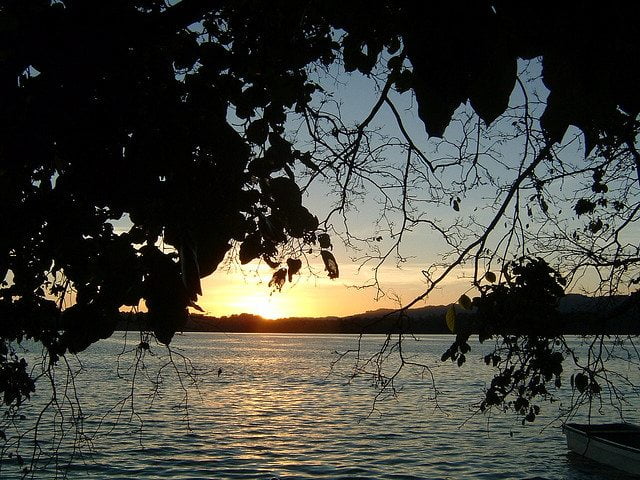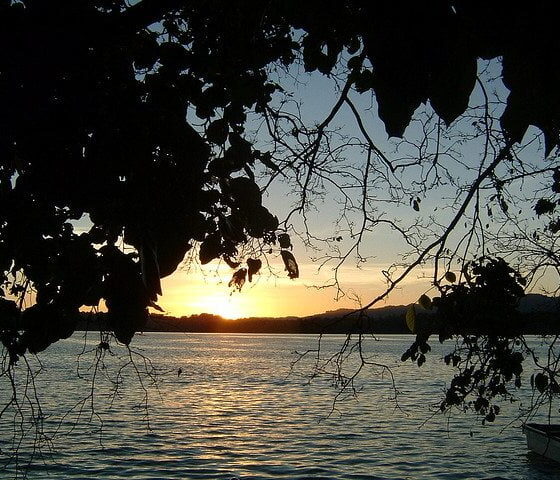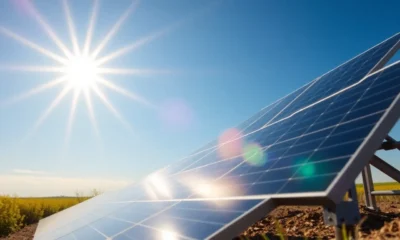

Energy
How island nations can lead the renewable energy revolution
Small island nations face a truly existential threat in the face of climate change, but they also have the potential to lead the renewable energy revolution that could save them, writes Ryan Gilchrist, who leads business development with enterprise clients at UGE.
On Thursday, the third international UN Conference on Small Island Developing States, held on Samoa in the Central South Pacific, came to a close. The overarching theme for this year’s conference was “the sustainable development of small island developing states (SIDS) through genuine and durable partnerships“.
It connected people from all over the world to assess the progress to date and the remaining gaps in the implementation of renewable energy, and sought a renewed political commitment by focusing on pragmatic actions for further implementations. The conference also worked to identify new and emerging challenges and opportunities for the sustainable development of SIDS and a means of addressing them.
At its conclusion, it was announced the conference forged nearly 300 partnerships between governments, businesses and civil society organisations, generating $1.9 billion (£1.1bn) to support SIDs’ sustainability efforts.
Around 600 million people live on islands around the world, and their population, agricultural land and infrastructure tend to be concentrated in coastal zones, where any rise in sea-level will have profound effects on their economies and living conditions.
In addition, global climate change may damage coral reefs, altering the distribution of zones of upwelling and affecting both subsistence and commercial fisheries production.
Currently the vast majority of island nations must import fossil fuels for their energy demands. This is increasingly expensive for island nations, as prices of oil increase, and supply slowly diminishes. The financial impact of fossil fuels is compounded by the environmental risk of transporting oil on ships across stretches of ocean, making the continued use of fossil fuels an unattractive prospect.
Conferences like this highlight the threats to island nations in the face of climate change, how they are vulnerable to its effects and how they are perfectly positioned to mitigate its potential impact.
However, not all is grim and dismal for the future of island nations, for they have geographically ideal conditions for almost all forms of renewable energy, allowing for a diversified renewable energy portfolio, which is much more reliable than single sourced energy of any kind.
Located in areas with an abundance of wind, sun, water, and biomass, while being smaller in size makes it much more feasible to implement renewable energy on a nationwide scale.
Best of all, these islands can serve as examples for the rest of the world to show how the idea of a future powered completely by renewable energy is not merely conceptual, but is indeed a very realistic option with applications very much in the present.
A few innovative ways that islands are leading on renewable energy:
Sicily, in the Mediterranean, had the world’s first solar farm. Built back in 1981, the farm is now being retrofitted with the latest concentrated solar panel technology. In 2014, Sicily now houses more than 8,000 solar facilities, and is home to over 30 wind farms. In western Sicily, Mazara Solar is a proposed 50 MW plant with an “innovative” tower technology to produce superheated steam while storing thermal energy as saturated steam. The plant is expected to generate about 534 GWh while being funded with up to €40 million. Renewables in Sicily are growing so much that even the mafia has gotten involved in the industry. The largest ever seizure of mafia holdings, in which €1.7 billion in assets were seized, included 9 wind farms and several solar power plants all tied to a mafia associate nicknamed “Lord of the Wind”.
Luzon, the biggest island in the Philippines will complete a 33 MW wind farm this month. The wind farm faces the South China sea where wind spins over 20 turbines, supplying up to 40% of the nation’s energy needs. In addition to this, a wind farm commissioned just a few hundred miles south on the same island in Mindoro Oriental, will have 24 turbines generating 2 MW of electricity each, for a total of 48 MW. This project should be completed by 2016. Hotels in the Philippines, such as the Anvaya Cove resort, are also using on-site renewable energy to conserve resources, boost the tourism industry, and showcase sustainability to their guests.
In New Caledonia, UGE designed a microgrid solution for a telecom tower in a very remote location that now runs on a hybrid of wind and solar, allowing the tower to operate without the use of any fossil fuels. This greatly reduces both the time spent traveling to this remote location and the money spent on importing fossil fuels such as diesel. Île Ouen in New Caledonia telecom towers can only be accessed by helicopter, meaning that any trip for the South Pacific telecom company OPT is an ordeal and an added expense. Without roads or excess resources, finding a reliable and efficient power source for the towers became a must. During a recent storm that ravaged New Caledonia, all of the UGE/Self Energy Pacific towers maintained uptime, facilitating critical communication, which is needed more than ever during rough weather conditions.
The Hawaiian islands in the Pacific currently rely on 90% imported oil for fuel, which is quite costly for the islands, while also polluting their pristine ecosystems. This is why Hawaii has set a target to have the islands powered 70% from renewable energy by 2030. Currently solar water heaters have been installed in some 80,000 homes and institutions throughout the state, while legislation is requiring every home to be retrofitted with these units to offset energy demand for heating water.
El Hierro Island in the Canary Islands now generates 100% of its energy from a mix of renewables to supply power needs for its approximately 12,000 residents.This helps the island nation save over 40,000 barrels of oil each year, which translates into 1.8 million euros per yearsaved by foregoing importation of fossil fuels. On top of this the island’s authorities have entered into an agreement with Nissan to replace all of El Hierro’s vehicles with electric cars in the next six years.
Samsoe Island in the Baltic gets 100% of its energy from wind turbines located around the island, both on and offshore. Sixty per cent of the island’s heat comes from straw bales left over from local farm harvest, which gets converted into biomass heat production. Just one bale of straw is equal to about 200 liters of oil. Samsoe citizens have shares in the HAWTs, which produce 10% more energy than the island uses. The excess is sold back to mainland for profit for each of the shareholders.
While island nations may have the most to lose from the effects of climate change, they also have a unique opportunity to lead. These islands represent the future of renewable energy independence, and are showing the rest of the world that such a future is not only possible, but is already here.
Ryan Gilchrist leads business development with enterprise clients at UGE, a New York-based worldwide distributed renewable energy company. UGE has projects in more than 90 countries around the world, including islands such as the Turks and Caicos, the Philippines, and Hawaii.
Photo: Luigi Guarino via Flickr
Further reading:
Samoa UN climate conference generates $2bn in island-to-continent environmental partnerships
Pacific island leaders set to discuss climate change and sustainability
Pacific Islands Forum closes with climate change and sustainable tourism commitment
Pacific island Kiribati buys land in Fiji to escape climate change
Small island states threatened by rising sea levels call for sustainability


 Environment9 months ago
Environment9 months agoAre Polymer Banknotes: an Eco-Friendly Trend or a Groundswell?

 Environment11 months ago
Environment11 months agoEco-Friendly Home Improvements: Top 7 Upgrades for 2025

 Features8 months ago
Features8 months agoEco-Friendly Cryptocurrencies: Sustainable Investment Choices

 Features10 months ago
Features10 months agoEco-Friendly Crypto Traders Must Find the Right Exchange





























